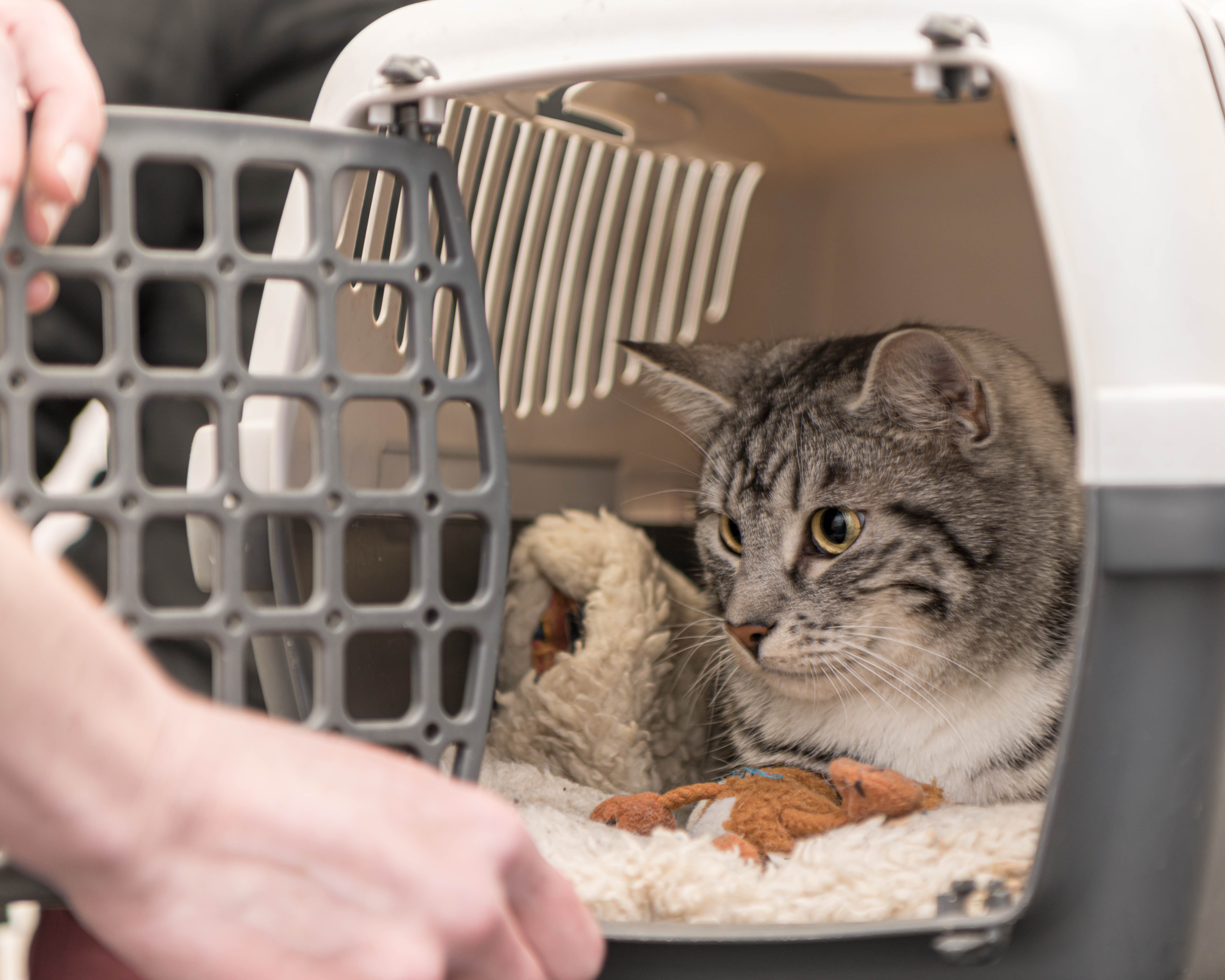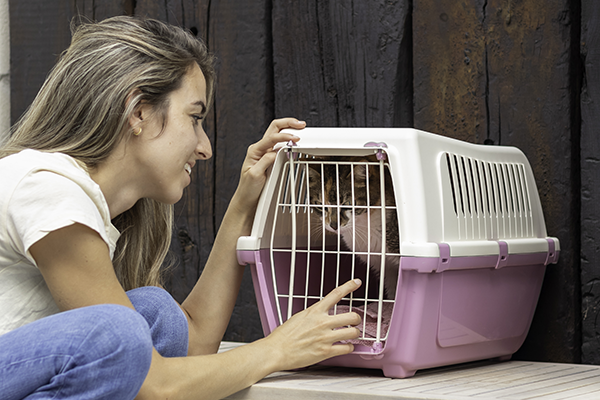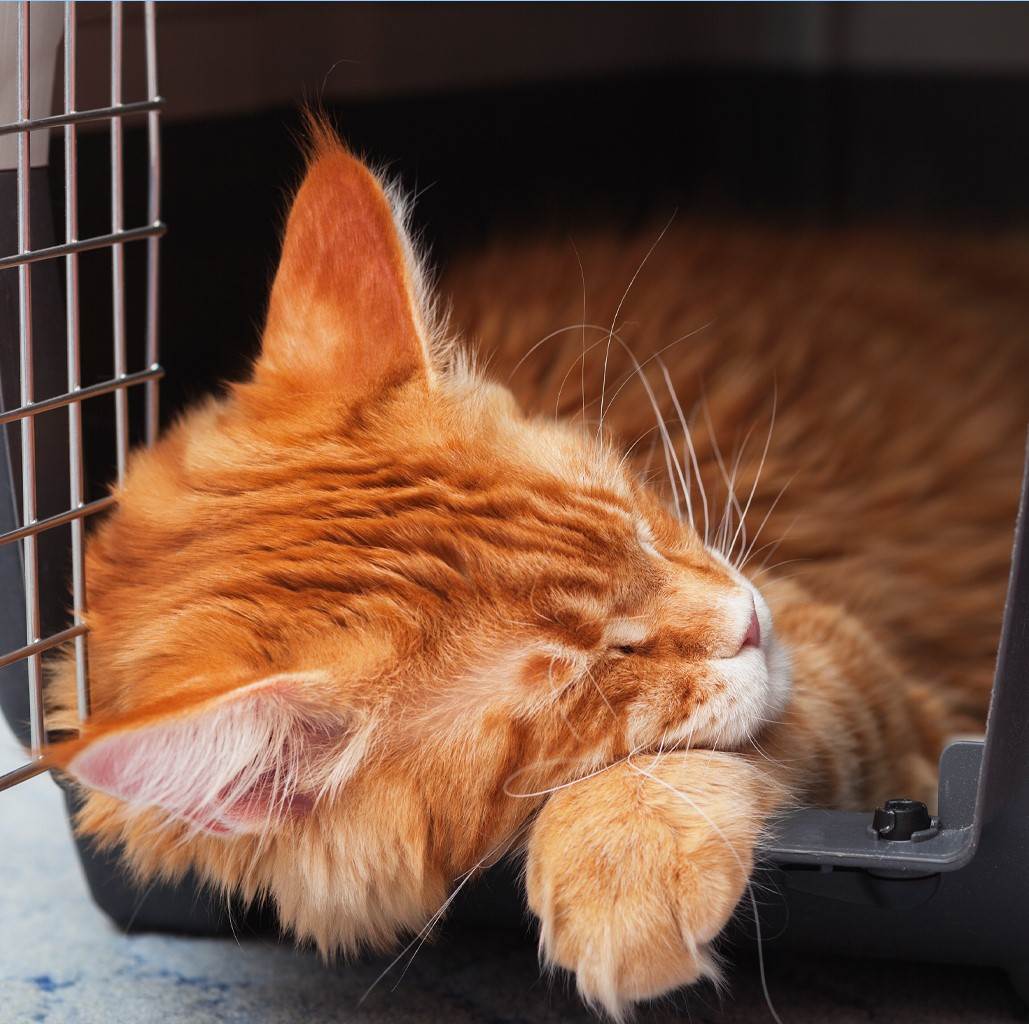Purrfectly prepared: 5 steps to cat-friendly car trips
Most cats are territorial homebodies who do not relish change, as it’s their daily routine and home environment that make them feel safe. This is why cats are not often avid travellers, and the unfamiliar sights, sounds, and smells of a car can cause anxiety and fear in many of them.
Luckily, with the right preparation and care, you can help your cat feel more comfortable and secure on car rides. Follow these five steps to ensure that while your purrfect friend might never be excited to travel in the car, the trips they need to take are uneventful (just the way they like it).
1. Choose the right type of carrier
Look for a carrier that is spacious enough for your cat to stand, turn around, and lie down comfortably. The carrier should also be sturdy, with a secure latch and good ventilation. Carriers with large enough entryways both on the top and the side allow you to get your cat in and out without a struggle. It’s also good if the carrier top can be removed to allow the cat to stay in the bottom part when necessary (e.g., during a vet examination).

2. Help your cat to tolerate or even like the carrier
Start by introducing the carrier gradually. If you can, place it in a common area of your home for a few weeks before the expected trip – or even permanently – to make it your cat’s own safe space. Leave the door open and place a familiar-smelling piece of clothing (an unwashed t-shirt works well) and some favourite toys inside. Every so often, put there also some special treats for your cat to ‘discover’. Once your cat is comfortable entering and exiting the carrier, start closing the door for short periods of time. Gradually increase the amount of time your cat spends in the carrier until they are okay with being inside for an extended period. Be patient — never push the cat inside but let them choose to enter.
3. Carry them softly
When it's time to hit the road, it's important to carry the carrier in the right way. Never carry the carrier by the handle as it can be unstable and uncomfortable for your cat. Instead, use both hands to support the carrier from the bottom, and raise and lower it slowly. This will help to keep your cat steady and prevent them from bouncing around. You can also do a few ‘practice runs’ and start small. First, try just walking around the house with the cat in the carrier.

4. Make the car ride pleasant
Start by setting up the carrier in a comfortable and secure location, which is usually the floor of the back seat (there’s less motion). Secure the carrier with a seatbelt or other restraint to prevent it from sliding around. Consider covering the carrier with a blanket or towel to create a cozy and calming environment. Again, start small by first only turning the car on for a brief period, then try a short drive in your neighbourhood. If you and your cat like music, play soft music like classical or look for cat-specific music online.
5. Address motion sickness and keep calm
Motion sickness in cats is mostly caused by travel-related stress and anxiety, often leading to episodes of vomiting. You can try to help by not feeding your cat (or just giving them a small meal) for a few hours before the car ride and supplying plenty of water to keep them hydrated. Packing a supply of baby wipes or paper towels can make quick clean-up of any messes that do occur. Also, remember that cats are highly attuned to their owner’s emotions, so it’s important that you behave calmly. If you are anxious about how it will go, your cat will mimic that feeling which will add to their stress. Speak to your cat in a soothing and reassuring tone and avoid sudden movements or loud noises that may startle them.
It’s essential to realise that for cats, safe things are familiar and predictable. This means that a lot of repetition might be needed for you to successfully take all five steps. The key here is patience!
Finally, it is possible that your cat needs more help than these steps can offer. There are different non-medicinal products available that could give some benefits. However, if your cat is really stressed or anxious about travelling – for example, yowling or panting all the way or being impossible to put in the carrier in the first place – please seek help from your vet! Even if it might feel hopeless, it is possible to find solutions to make car trips easier for both your cat and yourself. Happy travels!



